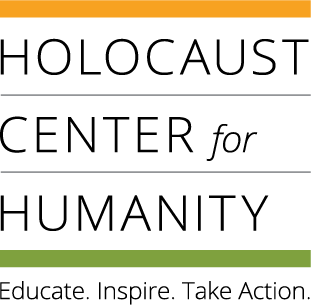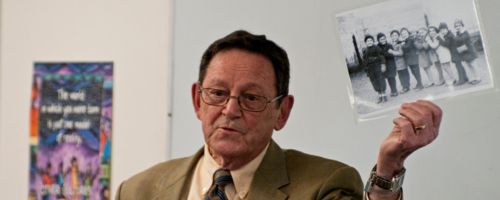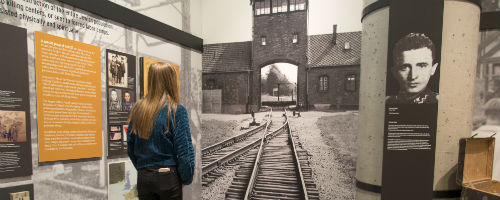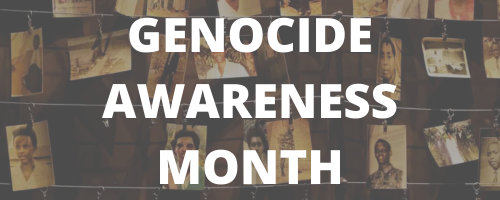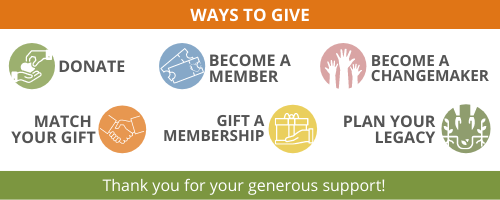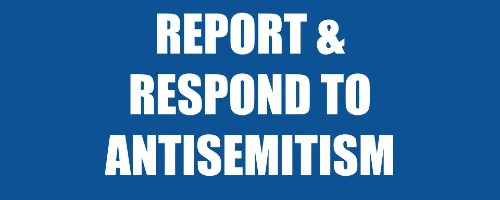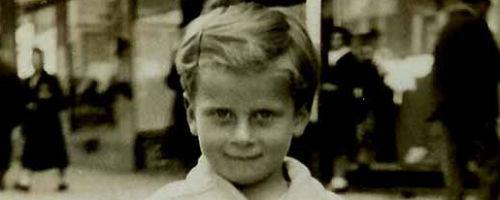Survivor Voices
Magda Schaloum was born in 1922 in Gyor, Hungary. Following the German occupation of Hungary on March 19, 1944, the Nazis began systematically depriving Jews of their rights and forcing them into ghettos. They forced Magda and her family to leave their home and then deported her, her brother, and their mother to Auschwitz.
Through the window of the cattle car, Magda saw her father desperately trying to give them a package filled with food and essentials. The guards beat him brutally and took the package, telling him they would give it to his family. Instead, they kept it for themselves.
Magda's father was sent to forced labor in the coal mines and the Nazis eventually transported him to the Buchenwald slave labor camp in Germany. Magda's sister avoided deportation thanks to protective papers from the Swedish diplomat Raoul Wallenberg. Wallenberg was later recognized by Yad Vashem as Righteous Among the Nations.
The Nazis deported Magda, her mother, and her brother. After riding for days in a squalid cattle car, Magda arrived in Auschwitz only to be separated from her brother, 15, and her mother, 56.
At the end of June 1944, Magda was sent to the infamous slave-labor camp Plaszow, near Krakow. At the end of August, she was sent to Augsburg, Germany, to work as a slave laborer in a factory. She and other workers looked out a window and saw the first snow beginning to fall. In a chain reaction, one worker began crying, then another, until everyone was in tears and wondering what was happening to their families and loved ones. Were they out in the snow without any protection? Were they even alive?
In April 1945 at Mühldorf, another slave labor camp, Magda met her future husband, Izak, a Sephardic native of Salonika, Greece. Their stay at Mühldorf was brief. The Nazis loaded them onto a cattle wagon with other survivors to be transported to an unknown spot to be murdered, but Allied troops liberated them along the way.
“When we heard about groups that denied the Holocaust, we decided that we had to speak out,” Magda says. “If you hear somebody deny the Holocaust, you can say, ‘I have seen and heard a survivor.’”
Magda Schaloum was an active member of the Holocaust Center for Humanity’s Speakers Bureau.
Stories of Local Survivors - Magda
"With My Own Eyes" Exhibit Passport - Magda
Map
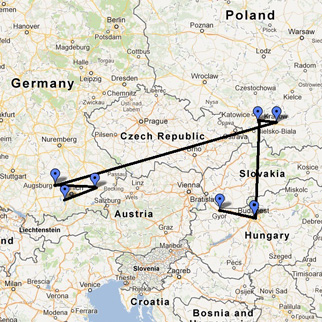
Video Testimony
Video 1 – “To the Ghetto”
Transcript 1 [PDF]
Video 2 – “An opportunity to hide”
Transcript 2 [PDF]
Video 3 – “Arriving in Auschwitz”
Transcript 3 [PDF]
Video 4 – “Slave labor”
Transcript 4 [PDF]
Survivor Voices
Peter was born in Amsterdam in 1935. In 1942, when Peter was only 7 years old, the Nazis seized his entire family, except for his mother Elli and him. The Dutch Underground contacted Klaus and Roefina Post on the Metzelaars’ behalf seeking a place of refuge. The Posts risked their lives to shelter Peter and his mother on their small farm in Makkinga in northern Holland. Until March of 1945, Peter and his mother remained there in hiding.
After a time the Metzelaars could no longer continue to put the Posts at risk, o they contacted the Dutch Underground once more and found two women living in The Hague willing to shelter them. After about nine months in the Hague, Ellie got wind that the women had plans to turn them in. Disguised in a nurse’s uniform she sewed herself, Ellie and Pete escaped to the road, hoping to catch a ride back to Amsterdam. In a cunning display, they flagged down a Nazi troop convoy, fooled them into thinking they were a Red Cross nurse and orphan, and hitched a ride back to Amsterdam undetected.
In 1992, Peter returned to Makkinga and visited the farm the Posts had once owned and the cave in which he and his mother had spent much time in. Klaus and Roefina Post have since been recognized by Yad Vashem (the Holocaust Museum in Israel) as Righteous Among the Nations*. Peter is now an active member of the Holocaust Center for Humanity’s Speakers Bureau.
* Since 1963, a commission, headed by an Israeli Supreme Court justice has been charged with the duty of awarding the title "Righteous among the Nations." When the data on hand clearly demonstrates that a non-Jewish person risked his (or her) life, freedom, and safety in order to rescue one or several Jews from the threat of death or deportation to death camps without exacting in advance monetary compensation, this qualifies the rescuer for serious consideration to be awarded the "Righteous Among the Nations" title.
Stories of Local Survivors - Peter
"With My Own Eyes" Exhibit Passport - Peter
Map
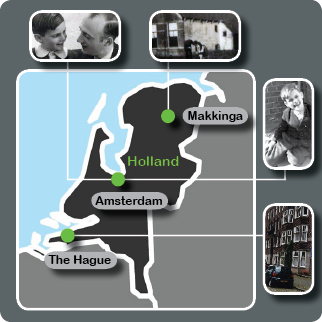
Video Testimony
Video 1 – “Juden Raus”
Transcript 1 [PDF]
Video 2 – “The Cave”
Transcript 2 [PDF]
Video 3 – “Red Cross Uniform”
Transcript 3 [PDF]
Survivor Voices
Henry Friedman was born in 1928 to a Jewish family in Brody, Poland. He recalls the discrimination he faced at the onset of the war when, at ten years old, a classmate told him to “wait until Hitler comes, he’ll take care of you!” In 1939 when the Russians occupied Brody, his family lost their business and many of their private possessions. After the Nazis invaded Brody in 1941, they swiftly deprived Jews of their basic rights, forbidding Jews to attend school or teach and forcing them to wear armbands bearing the Star of David. Henry recalls the police once catching his mother without her armband and beating her so badly that she could not raise her arms for a month.
One day in February 1942, a young Ukrainian woman named Julia Symchuck, ran to the Friedman’s house and warned Henry's father that the Gestapo was coming for him. Henry’s father was thus able to flee in time. Jews not forewarned were sent to camps to be put to work or were murdered. These round-ups, called “aktions,” sent 4,500 Jews to the Belzec death camp.
The final order came in the fall of 1942, when the remaining 6,500 Jews in the area were to move into a small ghetto in Brody. In October, 1942, the Friedmans were ordered to move into the ghetto. As a result, they went into hiding in the village of Suchowola where two different Ukrainian families helped them. Henry, his younger brother, their mother, and their female teacher hid in a barn owned by Julia Symchuck's parents. Their hiding space was tiny - about the size of a queen-size bed.
Henry’s father went to a separate hiding place half a mile from the Symchucks’ barn. They learned that from May to June of 1943, the Nazis were liquefying the ghetto in Brody. Most of the Jews in the ghetto were sent directly to Majdanek death camp.
For eighteen months, the Friedmans remained in hiding, freezing cold and slowly starving as food became scarce. Finally, in March 1944 the Russians liberated the village of Suchowola and the Friedmans.
Later, Julia Symchuck was recognized as one of the Righteous Among the Nations by Yad Vashem and was reunited with Henry Friedman in Seattle in 1989. Henry is a member of the Holocaust Center for Humanity’s Speakers Bureau.
Stories of Local Survivors - Henry
"With My Own Eyes" Exhibit Passport - Henry
Map
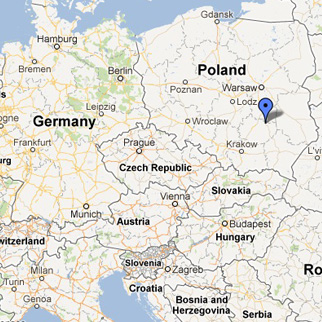
Video Testimony
Video 1 – “The Rescuers”
Transcript 1 [PDF]
Video 2 – “The Hiding Place”
Transcript 2 [PDF]
Video 3 – “Starvation”
Transcript 3 [PDF]
Video 4 – “Reunion with Rescuer - 1988”
Transcript 4 [PDF]
Photos
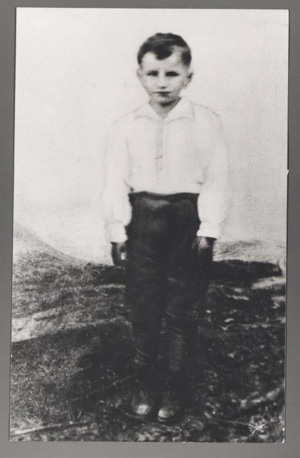
Henry F. - 1936
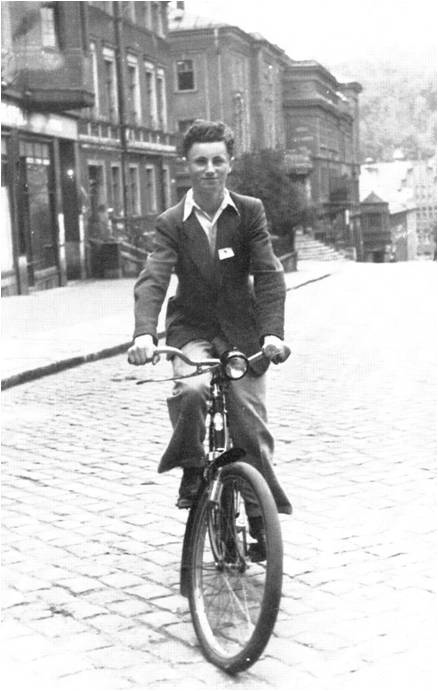
Henry F. - 1945
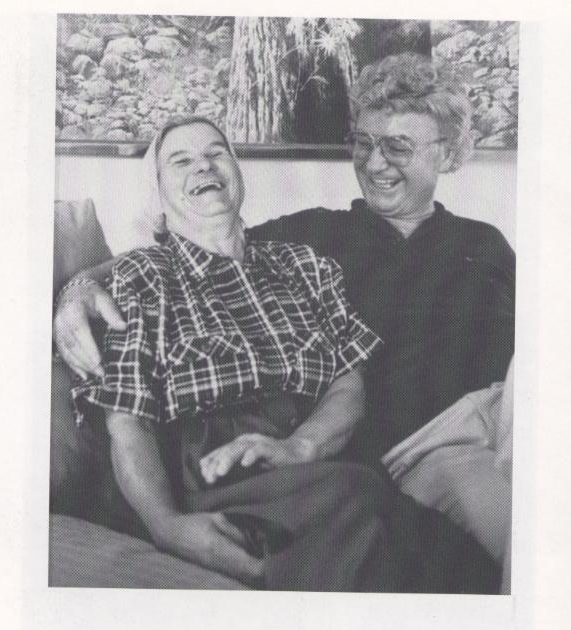
Henry with Julia Symchuck in the US
“All of a sudden we hear ‘Hitler's coming! Hitler's coming!’ And of course everybody had to give the Hitler salute, except Jews for whom it was forbidden. And so my mother said, ‘turn around.’ And we quickly turned around toward a jewelry shop and watched the reflection of Hitler passing by. A very scary moment.”
–Eva Tannenbaum-Cummins
Eva Tannenbaum-Cummins was born in Berlin, Germany in 1922. She was an only child. In March 1933, when Hitler became the chancellor of Germany, Eva’s father came home early and explained that he had been fired from his job because he was Jewish. When Eva was in the 5th grade, her school principal called all the Jewish students in her school and explained that Nazi laws now required their expulsion.
In 1935, Eva’s father, who had taught her to appreciate opera, theater, and music, passed away from natural causes. This event may have spared her father from being one of 30,000 Jewish males imprisoned in Germany on Kristallnacht (The Night of Broken Glass). On the Kristallnacht, Nazi Party Officials and Storm Troopers instigated the destruction of hundreds of synagogues and thousands of Jewish stores.
After Kristallnacht, Eva and her mother spent nearly a year trying to leave Germany for Seattle where their cousin lived. Since Nazi laws restricted the amount of money emigrating Jews could take from Germany, Eva and her mother arrived in Seattle in 1939 with only $20. Two weeks later, on Sept. 1, 1939, Germany invaded Poland and ignited WWII.
Eva became an actress, and in 1995 she wrote her own one-woman show entitled, “A Page from the Past … Or is it?” The piece reflects on her memories during the Holocaust regarding antisemitism and racist laws in Nazi Germany.
Eva continues to live in Seattle and spreads her message through the work of the Holocaust Center for Humanity, where she often asks her audience: “Can any of this happen here? That’s something that’s up to each and every one of us.”
Stories of Local Survivors - Eva C.
Map
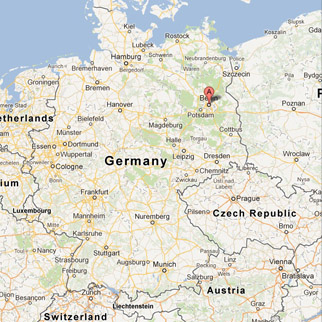
Video Testimony
Video 1 – “Eva-Hitler 1”
Transcript 1 [PDF]
Video 2 – “Eva-Park Bench”
Transcript 2 [PDF]
Video 3 – “Eva-Kristallnacht”
Transcript 3 [PDF]
Photos
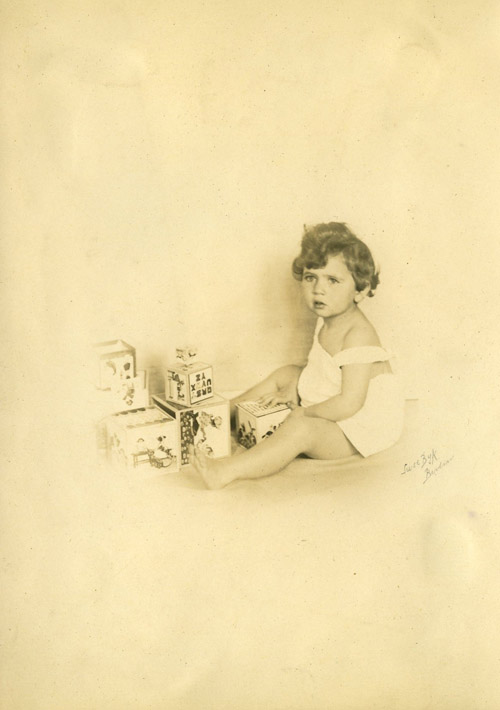
October of 1924, Eva at 2 years old
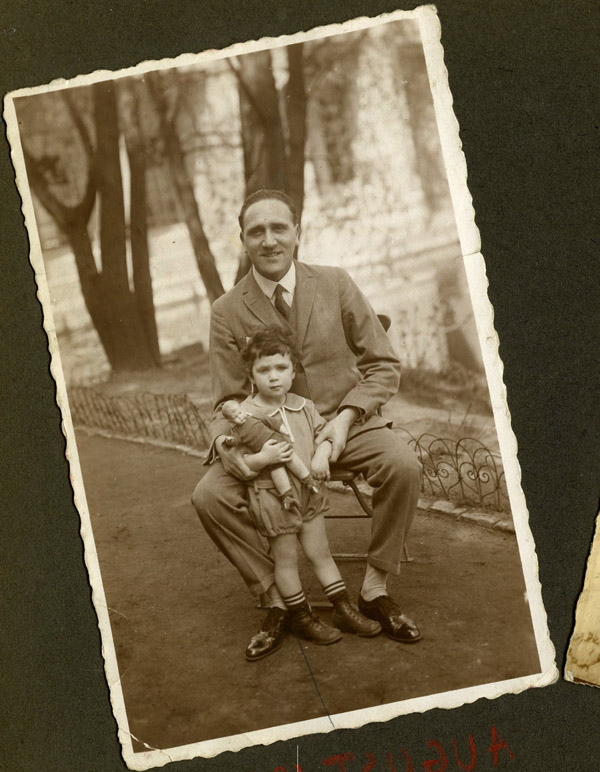
August of 1925, Eva and her father, Berlin, Germany.
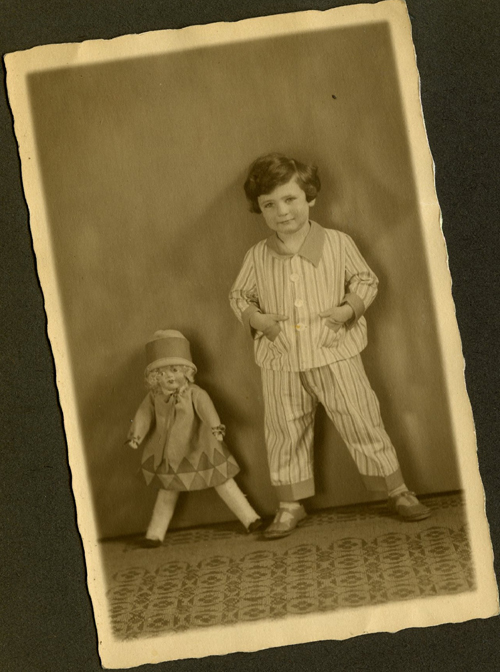
April 30, 1926, Eva
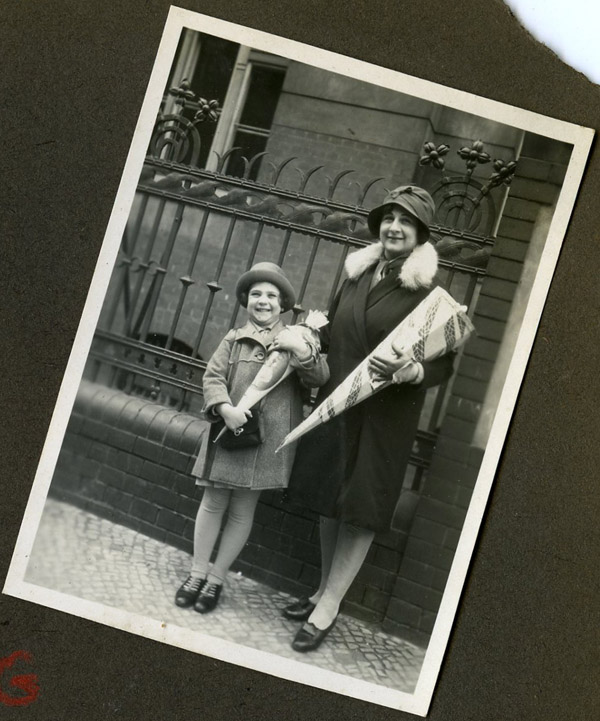
April 11, 1929, Eva stands with her mother on her first day of school holding a Schultute, or “school cone,” filled with candy and school supplies."
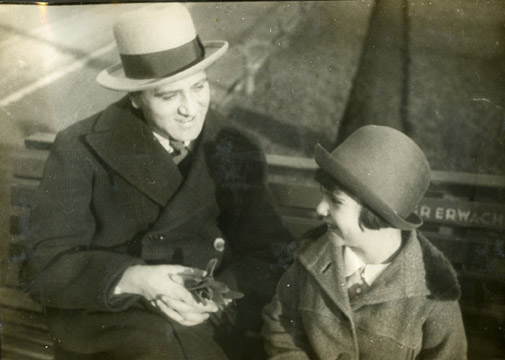
December 1929, Eva and her father.
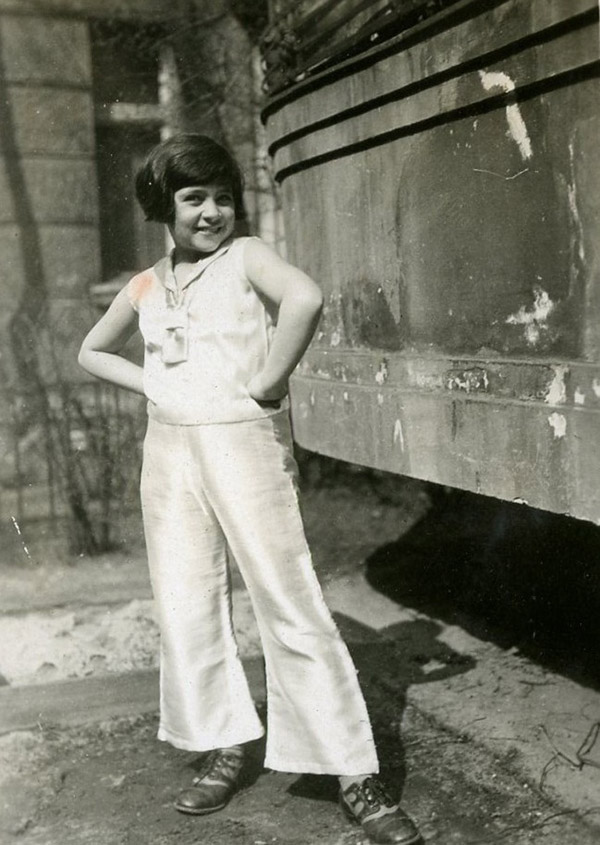
May 2, 1931, Eva.
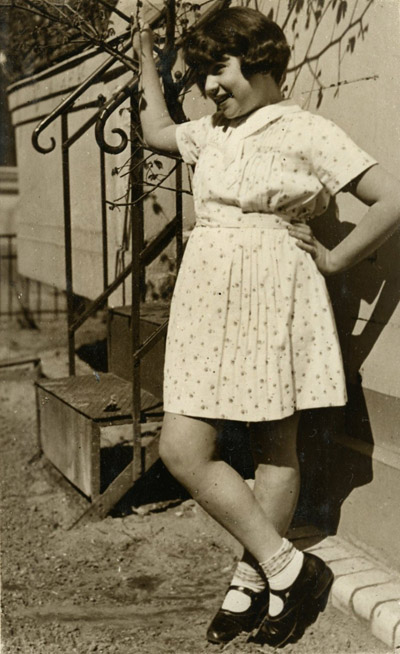
May 1932, Eva posing outside, with her father behind the camera, a year before he dies.
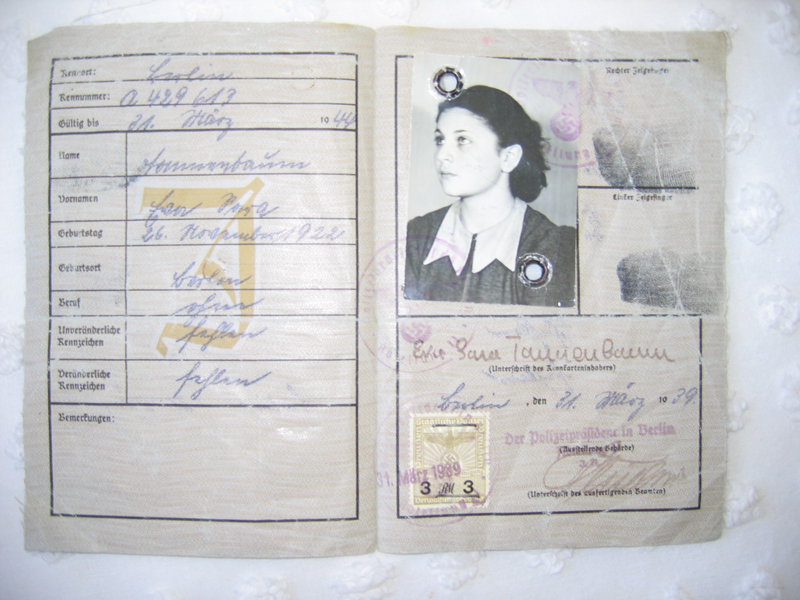
Passport for Eva Tannenbaum
